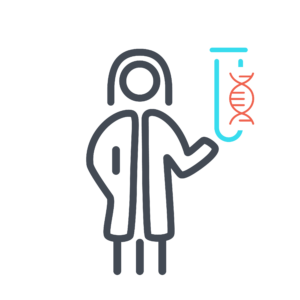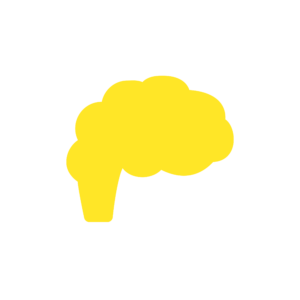CLCN4-Related Syndrome

Table of contents
- What is CLCN4-related syndrome?
- Key Role
- Symptoms
- What causes CLCN4-related syndrome ?
- Why does my child have a change in the CLCN4 gene?
- What are the chances that other family members of future children will have CLCN4-related syndrome?
- How many people have CLCN4-related syndrome?
- Do people who have CLCN4-related syndrome look different?
- How is CLCN4-related syndrome treated?
- Behavior and development concerns linked to CLCN4-related syndrome
- 1) Males with a CLCN4 genetic variant
- 2) Females with a new CLCN4 genetic variant
- 3) Females with an inherited CLCN4 genetic variant, or a variant of unknown inheritance
- Where can I find support and resources?
- Sources and References
CLCN4-related syndrome is also called Raynaud-Claes syndrome. For this webpage, we will be using the name CLCN4-related syndrome to encompass the wide range of variants observed in the people identified.
What is CLCN4-related syndrome?
CLCN4-related syndrome happens when there are changes in the CLCN4 gene. These changes can keep the gene from working as it should.
The CLCN4 gene is located on the X chromosome, which is one of the sex chromosomes. Chromosomes are structures in our cells that house our genes.
CLCN4-related syndrome usually happens in males, but females may also have the condition. This depends on the type of genetic variant found in females. A female biological CLCN4-carrier parent may have mild neurodevelopmental features.

Key Role
CLCN4 plays a key role in brain function.
Symptoms
People who have CLCN4-related disorder may have:
- Developmental delay
- Intellectual disability
- Seizures
- Behavioral issues, such as features of autism, anxiety, mood disorders, obsessive-compulsive behaviors
- Brain changes seen on magnetic resonance imaging (MRI)
- Sideways curve of the spine, also called scoliosis
- Feeding challenges
- Gastrointestinal issues
- Vision or hearing issues
- Movement issues, such as ataxia
What causes CLCN4-related syndrome ?
CLCN4-related syndrome is a genetic condition, which means that it is caused by variants in genes. Our genes contain the instructions, or code, that tell our cells how to grow, develop, and work. Genes are arranged in structures in our cells called chromosomes. Chromosomes and genes usually come in pairs, with one copy from the mother, from the egg, and one copy from the father, from the sperm.
We each have 23 pairs of chromosomes. One pair, called the X and Y chromosomes, differs between biological males and biological females. Biological females have two copies of the X chromosome and all its genes, one inherited from their mother and one inherited from their father. Biological males have one copy of the X chromosome and all its genes, inherited from their mother, and one copy of the Y chromosome and its genes, inherited from their father.
In most cases, parents pass on exact copies of the gene to their child. But the process of making the sperm and egg is not perfect. A variant in the genetic code can lead to physical issues, developmental issues, or both.
The CLCN4 gene is located on the X chromosome, so variants in this gene can affect biological males and biological females in different ways. Biological males who have variants in this gene will likely have CLCN4-related syndrome.
Biological females who have variants in this gene may or may not have symptoms of CLCN4-related syndrome. Biological females who have one working copy of the gene and one non-working copy are considered to be ‘carriers’. Even if a biological female does not have signs or symptoms of the syndrome, they can pass it along to their children.
X-linked recessive conditions
CLCN4-related syndrome sometimes is the result of an inherited variant in CLCN4. This means a CLCN4 genetic variant that was passed down from a biological female parent. Biological females who carry the CLCN4 variant sometimes have symptoms.
X-Linked Recessive Genetic Syndrome
X-linked dominant conditions
CLCN4-related syndrome can also be caused by an X-linked dominant genetic variant. This is when a spontaneous variant in the CLCN4 gene happens in the sperm or egg during development. When a brand new genetic variant happens in the genetic code it is called a ‘de novo’ genetic variant. The child can be the first in the family to have the gene variant.
De novo variants can take place in any gene. We all have some de novo variants, most of which don’t affect our health. But because CLCN4 plays a key role in development, de novo variants in this gene can have a meaningful effect.
X-Linked Dominant Genetic Syndrome
Why does my child have a change in the CLCN4 gene?
No parent causes their child’s CLCN4-related syndrome. We know this because no parent has any control over the gene changes that they do or do not pass on to their children. Please keep in mind that nothing a parent does before or during the pregnancy causes this to happen. The gene change takes place on its own and cannot be predicted or stopped.
What are the chances that other family members of future children will have CLCN4-related syndrome?
Each family is different. A geneticist or genetic counselor can give you advice on the chance that this will happen again in your family.
The risk of having another child who has CLCN4-related syndrome depends on the genes of both biological parents.
X-linked recessive conditions
- Biological females who have a variant in the CLCN4 gene and are pregnant with a daughter have a 50 percent chance of passing on the same genetic variant and a 50 percent chance of passing on the working copy of the gene.
- If they are pregnant with a son, the child has a 50 percent chance of inheriting the genetic variant and the syndrome.
For a symptom-free brother or sister of someone who has CLCN4-related syndrome, the sibling’s risk of having a child who has CLCN4-related syndrome depends on the sibling’s genes and their parents’ genes.
- If neither parent has the same genetic variant causing CLCN4-related syndrome, the symptom-free sibling has a nearly 0 percent chance of having a child who would inherit CLCN4-related syndrome.
- If the biological mother has the same genetic variant causing CLCN4-related syndrome, and the symptom-free daughter has the variant, the symptom-free daughter’s chance of having a son who has CLCN4-related syndrome is 50 percent.
For a person who has CLCN4-related syndrome, the risk of having a child who has the syndrome is about 50 percent.
X-linked dominant conditions
- For a biological female parent who does not have the same genetic variant found in their child, the chance of having another child who has the syndrome is on average 1 percent. This 1 percent chance is higher than the chance of the general population. The increased risk is due to the very unlikely chance that more of the mother’s egg cells or the father’s sperm cells carry the same genetic variant.
- For a biological female parent who has the same CLCN4 variant and is pregnant with a daughter, there is a 50 percent chance of passing on the same genetic variant and a 50 percent chance of passing on the working copy of the gene without the same CLCN4 genetic variant.
- If they are pregnant with a son, there is a 50 percent chance of passing on the same genetic variant and the syndrome.
For a symptom-free brother or sister of someone who has CLCN4-related syndrome, the sibling’s risk of having a child who has CLCN4-related syndrome depends on the sibling’s genes and their parents’ genes.
- If neither parent has the same genetic variant causing CLCN4-related syndrome, the symptom-free sibling has a nearly 0 percent chance of having a child who would inherit CLCN4-related syndrome.
- If the biological mother has the same genetic variant causing CLCN4-related syndrome, the symptom-free daughter has a 50 percent chance of also having the same genetic variant. If the symptom-free daughter has the same genetic variant as their sibling who has the syndrome, the symptom-free sibling’s chance of having a son who has CLCN4-related syndrome is 50 percent.
For a person who has CLCN4-related syndrome, the risk of having a child who has the syndrome is about 50 percent.

How many people have CLCN4-related syndrome?
As of 2025, about 146 people with CLCN4-related syndrome have been identified in medical research.

Do people who have CLCN4-related syndrome look different?
Young children who have CLCN4-related syndrome do not usually look different, but as people get older, they may look a bit different. Older people may have some but not all of these features:
- Long face with straight nose
- Pointed chin
- Flat midface
- Square jaw shape

How is CLCN4-related syndrome treated?
Scientists and doctors have only just begun to study CLCN4-related syndrome. At this point, there are no medicines designed to treat the syndrome. A genetic diagnosis can help people decide on the best way to track the condition and manage therapies. Doctors can refer people to specialists for:
- Physical exams and brain studies
- Genetics consults
- Development and behavior studies
- Other issues, as needed
A developmental pediatrician, neurologist, or psychologist can follow progress over time and can help:
- Suggest the right therapies. This can include physical, occupational, speech, or behavioral therapy.
- Guide individualized education plans (IEPs).
Specialists advise that therapies for CLCN4-related syndrome should begin as early as possible, ideally before a child begins school.
If seizures happen, consult a neurologist. There are many types of seizures, and not all types are easy to spot. To learn more, you can refer to resources such as the Epilepsy Foundation’s website: www.epilepsy.com/learn/types-seizures.

This section includes a summary of information from published articles. It highlights how many people have different symptoms. To learn more about the article, see the Sources and References section of this guide.
Behavior and development concerns linked to CLCN4-related syndrome
The information below is grouped by 1) males with a CLCN4 genetic variant, 2) females with a new (also called de novo) CLCN4 genetic variant that did not come from either parent, and 3) females with an inherited CLCN4 genetic variant, or with a variant of unknown inheritance.
1) Males with a CLCN4 genetic variant
Speech and Learning
Males had developmental delay or intellectual disability (ID), and speech delays or impairment. A few males did not have a reported intellectual disability, but they had a learning disability.
- 71 out of 73 people had developmental delay or intellectual disability (97 percent)
- 70 out of 70 people had speech impairment (100 percent)
The severity of intellectual disability (ID) varied among people:
- 16 out of 67 people had mild or borderline ID (24 percent)
- 22 out of 67 people had moderate ID (33 percent)
- 29 out of 67 people had severe or profound ID (43 percent)

Behavior
Males had behavioral issues, such as autism, attention-deficit/hyperactivity disorder (ADHD), aggression or outbursts, anxiety, obsessive-compulsive disorder, sleep challenges, and psychotic disorder.
- 20 out of 72 people had autism (28 percent)
- 17 out of 58 people had ADHD (29 percent)
- 8 out of 58 people had aggression or outbursts (14 percent)
- 10 out of 58 people had anxiety (17 percent)
- 6 out of 58 people had obsessive-compulsive disorder (10 percent)
- 1 out of 58 people had psychotic disorder (2 percent)
Brain
Males had neurological medical issues, including seizures, brain changes seen on magnetic resonance imaging (MRI), lower than average muscle tone (hypotonia), and a smaller than average head size (microcephaly).
- 45 out of 73 people had seizures (62 percent)
- 31 out of 47 people had brain changes seen on MRI (66 percent)
- 23 out of 61 people had hypotonia (38 percent)
- 11 out of 59 people had microcephaly (19 percent)

Graphs
100%
80%
60%
40%
20%
0
- 21 out of 42 people had seizures controlled with medication (50 percent)
Graphs
One-half of males were able to control seizures with medication.
About 3 out of 10 males (32 percent) had late onset of neurological symptoms, such as tremor, ataxia, abnormally increased and sometimes uncontrollable activity or muscular movements, stereotypical movements, and changes in walking over time.

2) Females with a new CLCN4 genetic variant
Speech and Learning
Most females with a new CLCN4 genetic variant had developmental delay or intellectual disability (ID), and speech delays or impairment.
- 22 out of 24 people had developmental delay or intellectual disability (92 percent)
- 23 out of 24 people had speech impairment (96 percent)
The severity of intellectual disability (ID) varied among people:
- 8 out of 20 people had mild or borderline ID (40 percent)
- 8 out of 20 people had moderate ID (40 percent)
- 4 out of 20 people had severe or profound ID (20 percent)

Behavior
Females with a new CLCN4 genetic variant had behavioral issues, such as autism, attention-deficit/hyperactivity disorder (ADHD), aggression or outbursts, anxiety, obsessive-compulsive disorder, and sleep challenges.
- 6 out of 23 people had autism (26 percent)
- 7 out of 20 people had ADHD (35 percent)
- 6 out of 20 people had aggression or outbursts (30 percent)
- 9 out of 20 people had anxiety (45 percent)
- 2 out of 20 people had obsessive-compulsive disorder (10 percent)

Graphs
100%
80%
60%
40%
20%
0
Brain
Females with a new CLCN4 genetic variant had neurological medical issues, including seizures, brain changes seen on magnetic resonance imaging (MRI), and lower than average muscle tone (hypotonia).
- 6 out of 24 people had seizures (25 percent)
- 12 out of 20 people had brain changes seen on MRI (60 percent)
- 11 out of 20 people had hypotonia (55 percent)
Most females were able to control seizures with medication.
- 5 out of 6 people had seizures controlled with medication (83 percent)
Exactly 4 out of 10 females (40 percent) had late onset neurological symptoms, such as tremor, ataxia, abnormally increased and sometimes uncontrollable activity or muscular movements, stereotypical movements, and changes in walking over time.

3) Females with an inherited CLCN4 genetic variant, or a variant of unknown inheritance
Speech and Learning
Some females had developmental delay or intellectual disability (ID), and speech delays or impairment.
- 12 out of 47 people had developmental delay or intellectual disability (26 percent)
- 7 out of 47 people had speech impairment (15 percent)
The severity of intellectual disability (ID) varied among people:
- 6 out of 47 people had mild or borderline ID (13 percent)
- 1 out of 47 people had moderate ID (2 percent)
- 5 out of 47 people had severe or profound ID (11 percent)

Behavior
Some females had behavioral issues, such as autism, attention-deficit/hyperactivity disorder (ADHD), anxiety, and depression or bipolar disorder.
- 5 out of 37 people had autism (14 percent)
- 3 out of 37 people had ADHD (8 percent)
- 3 out of 37 people had anxiety (8 percent)
- 3 out of 37 people had depression or bipolar disorder (8 percent)

Graphs
100%
80%
60%
40%
20%
0
Brain
Rarely, females had neurological medical issues, including seizures and lower than average muscle tone (hypotonia).
- 2 out of 44 people had seizures (5 percent)
- 3 out of 37 people had hypotonia (8 percent)

Where can I find support and resources?
Cure CLCN4
Cure CLCn4 is a registered charity aimed at providing support, raising awareness and funding medical research for effective treatments for CLCN4.
Simons Searchlight
Simons Searchlight is an online international research program, building an ever growing natural history database, biorepository, and resource network of over 175 rare genetic neurodevelopmental disorders. By joining their community and sharing your experiences, you contribute to a growing database used by scientists worldwide to advance the understanding of your genetic condition. Through online surveys and optional blood sample collection, they gather valuable information to improve lives and drive scientific progress. Families like yours are the key to making meaningful progress. To register for Simons Searchlight, go to the Simons Searchlight website at www.simonssearchlight.org and click “Join Us.”
- Learn more about Simons Searchlight: www.simonssearchlight.org/frequently-asked-questions
- Simons Searchlight webpage with more information on CLCN4: www.simonssearchlight.org/research/what-we-study/clcn4
- Simons Searchlight CLCN4 Facebook community: https://www.facebook.com/groups/clcn4

Sources and References
- He, H., Li, X., Guzman, G. A., Bungert-Plümke, S., Franzen, A., Lin, X., Zhu, H., Peng, G., Zhang, H., … & Guzman, R. E. (2024). Expanding the genetic and phenotypic relevance of CLCN4 variants in neurodevelopmental condition: 13 new patients. Journal of Neurology, 271(8), 4933-4948. doi:10.1007/s00415-024-12383-4
- Li, S., Zhang, W., Liang, P., Zhu, M., Zheng, B., Zhou, W., Wang, C., & Zhao, X. (2023). Novel variants in the CLCN4 gene associated with syndromic X-linked intellectual disability. Frontiers in Neurology, 14, 1096969. doi:10.3389/fneur.2023.1096969
- Palmer, E. E., Nguyen, M. H., Forwood, C., & Kalscheuer, V. CLCN4-related neurodevelopmental disorder. 2021 Dec 16. In: Adam MP, Feldman J, Mirzaa GM, et al., editors. GeneReviews® [Internet]. Seattle (WA): University of Washington, Seattle; 1993-2025. Available from: https://www.ncbi.nlm.nih.gov/books/NBK575836/
- Palmer, E. E., Pusch, M., Picollo, A., Forwood, C., Nguyen, M. H., Suckow, V., Gibbons, J., Hoff, A., Sigfrid, L., … & Kalscheuer, V. M. (2023). Functional and clinical studies reveal pathophysiological complexity of CLCN4-related neurodevelopmental condition. Molecular Psychiatry, 28(2), 668-697. doi:10.1038/s41380-022-01852-9
- Sahly, A. N., Sierra-Marquez, J., Bungert-Plümke, S., Franzen, A., Mougharbel, L., Berrahmoune, S., Dassi, C., Poulin, C., Srour, M., … & Myers, K. A. (2024). Genotype-phenotype correlation in CLCN4-related developmental and epileptic encephalopathy. Human Genetics, 143(5), 667-681. doi:10.1007/s00439-024-02668-z
